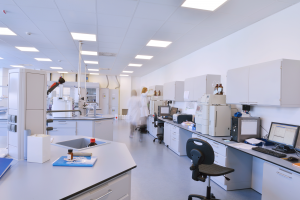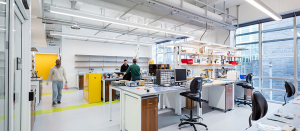Why Laboratory Science Market is Good Business for Architectural Firms
Why is the laboratory science market good business for architectural firms? Read about how architectural firms play a big role in laboratory design!
Many sensitive scientific lab experiments or industrial processes have very specific requirements limiting the amount of air-borne particulates that can be present.”
AUSTIN, TX, UNITED STATES, June 26, 2018 /EINPresswire.com/ -- If you are an interior architect, you might have dismissed the niche laboratory design market as overly technical and inherently less interesting than working on projects of similar magnitude in the fields of residential or office design.— Formaspace
You Think Laboratory Design is Too Boring? Too Technical? Too Dull?
You might want to think twice before making these kinds of assertions about today’s laboratory design projects.
Stunning designs like the new JLABS facility at the Texas Medical Center in Houston will challenge any stereotypes you may still hold that laboratory design projects are inherently uninteresting, dull or boring.
San Francisco-based architectural giant Gensler partnered with the Houston-based PhiloWilke Partnership to design the new Johnson & Johnson Innovation (JLABS) life science incubator at the Texas Medical Center. Gensler was responsible for the interior design, while PhiloWilke designed the laboratory spaces.
The JLABS project is not just a one-off example. The world of laboratory design is really reaching new heights. To illustrate the point, we turn to R&D Magazine and their annual laboratory design awards.
The R&D Magazine 2016 Lab of the Year award went to the Electrical & Computer Engineering (ECE) facility at the University of Illinois’ Urbana-Champaign campus. Designed by Omaha-based national firm Smithgroup JJR, the ECE has outstanding energy savings characteristics and expects to achieve a Net Zero Energy rating as well as LEED Platinum certification from the U.S. Green Building Council.
Not all lab design projects are new construction; renovations are common in this market sector. An excellent example is R&D Magazine’s recipient for Renovated Laboratory of the Year: a major lab project at Cornell University, designed by the Boston-based architecture firm Payette.
Rounding out this year’s R&D Magazine awards is their Special Recognition for Design, which went to a new patient facility at MD Anderson Cancer Center in Houston, designed by Omaha-based HDR, an architecture and engineering firm with over 10,000 employees worldwide.
The Laboratory Science Market is Good Business for Architectural Firms
While there are relatively few firms nationwide that offer laboratory design services, those that do are part of a multi-million dollar market. As an example, Clark Nexsen, a national architectural firm with locations that include Austin, Raleigh and Richmond, VA, announced that they reached a milestone of projects totaling more than 20 million square feet of work in the broader scientific and technology market space (including tech education facilities).
Other architecture design firms that are punching above their weight in the laboratory science field include:
The Cooper Carry’s Science + Technology studio (offices in Atlanta, Wash. DC and New York City) which designed the Emory University Atwood Chemistry Building and Addition in Atlanta.
CRB, the global consulting, design and construction services firm, which designed the Andover Clinical Manufacturing Facility for the pharmaceutical giant Pfizer.
Houston-based EnergyArchitecture, which has designed laboratory testing facilities around the world for the energy market.
Svigals + Partners Architects, based in New Haven Connecticut, designers of the new Yale University Integrated Science Technology Center.
What’s Stopping You from Taking a Dive into Laboratory Design?
Have these examples whetted your appetite for pursuing laboratory design projects?
Perhaps you’re interested but concerned that it’s a step too far into the unknown.
Now might be a good time to quantify what’s similar and what’s different about the discipline of laboratory design compared to other fields of architectural practice.
Fortunately for those making a transition into laboratory design, quite a few key project management and design programming skills needed for major projects are the same, whether the end product is a bank, a holiday resort, an apartment complex, a renovated mix-use historical train station, or a new research laboratory facility.
Project Success Characteristics Shared between Laboratory and Other Projects
Understanding the needs of the client
Developing effective project programming
Ability to manage major clients in the corporate, education, government or military arena
Partnering with engineering and construction firms
Managing and delivering major projects on time and on budget
Developing sustainable designs (e.g. LEED certification, energy reduction)
Sourcing reliable vendors for specialty applications (such as contract furniture manufacturers, like Formaspace)
How is Laboratory Design Different?
Now let’s take a moment to consider how laboratory design is different from other fields of architectural practice.
At the 10,000 foot level, what’s the main difference?
Debbie Zack
Formaspace
8002511505
email us here
Gensler - JLABS @ TMC
Legal Disclaimer:
EIN Presswire provides this news content "as is" without warranty of any kind. We do not accept any responsibility or liability for the accuracy, content, images, videos, licenses, completeness, legality, or reliability of the information contained in this article. If you have any complaints or copyright issues related to this article, kindly contact the author above.


